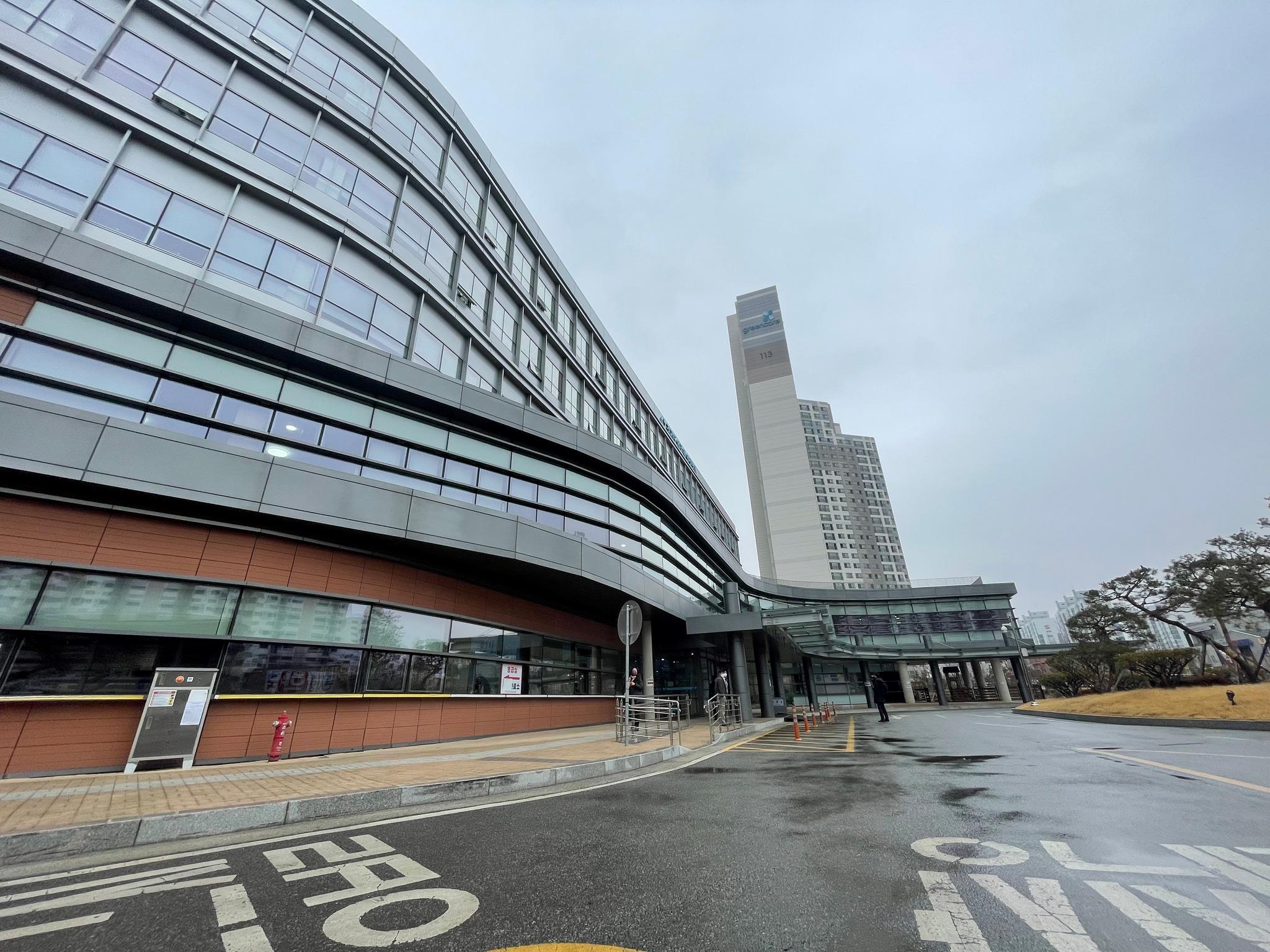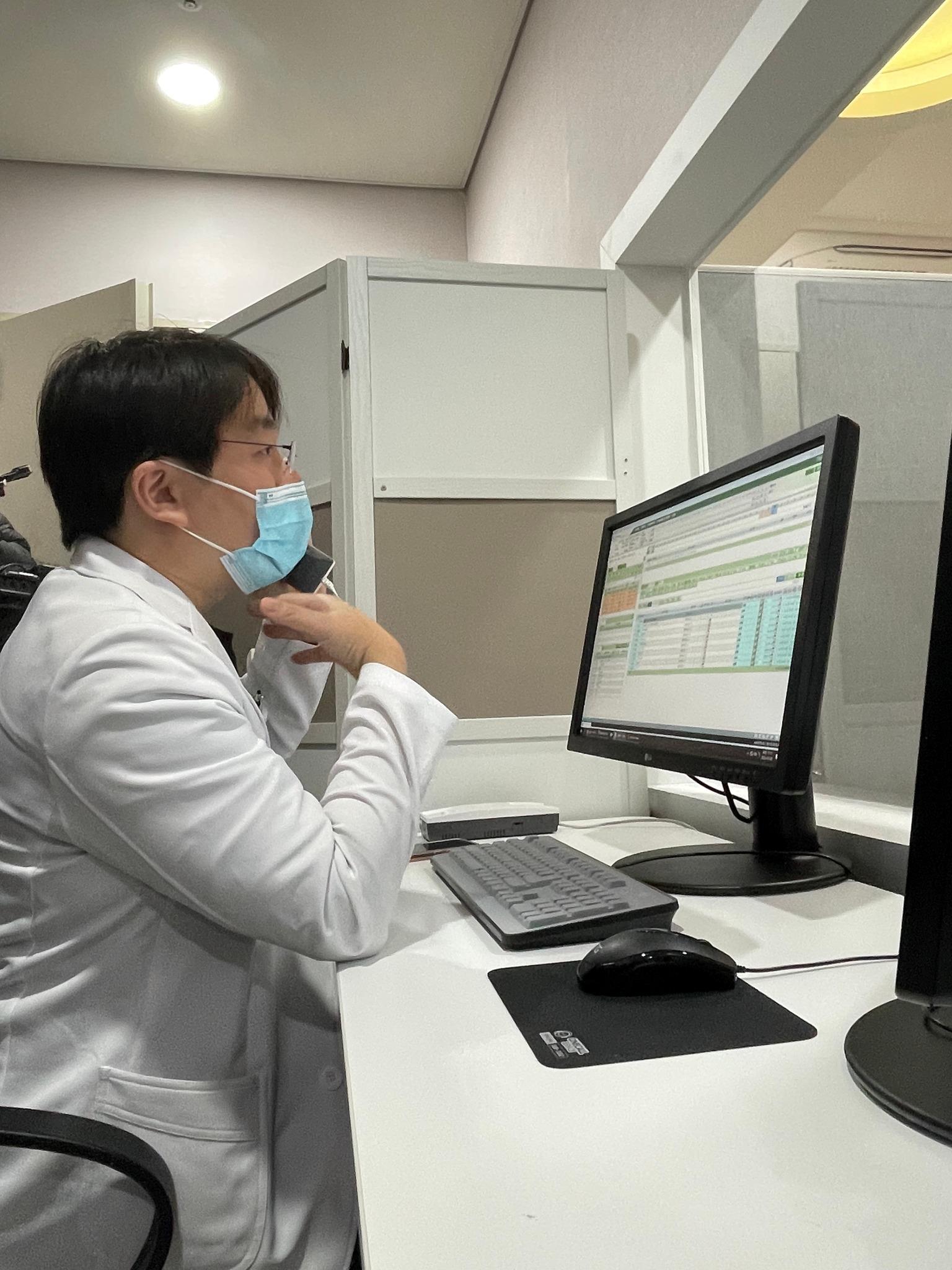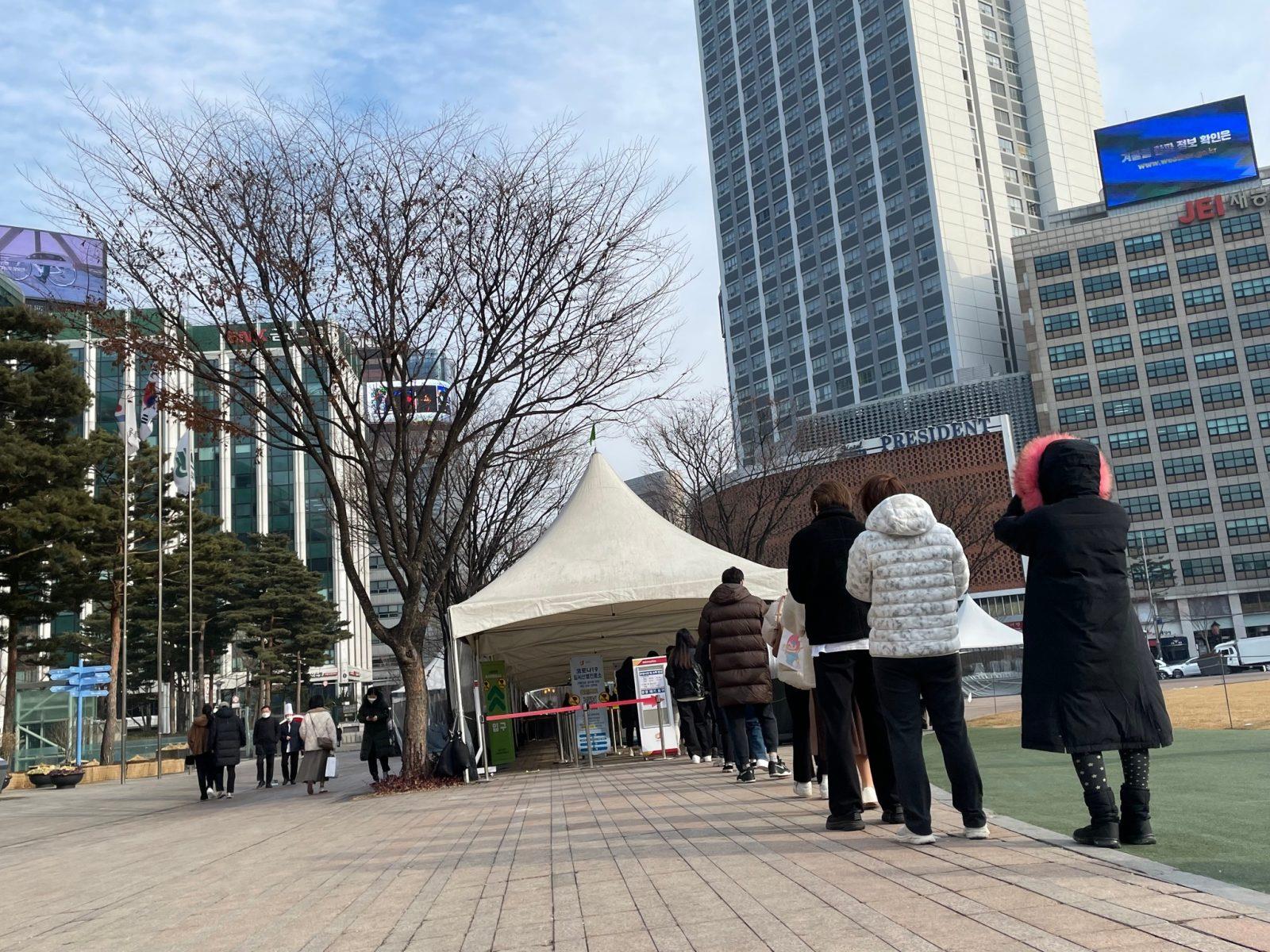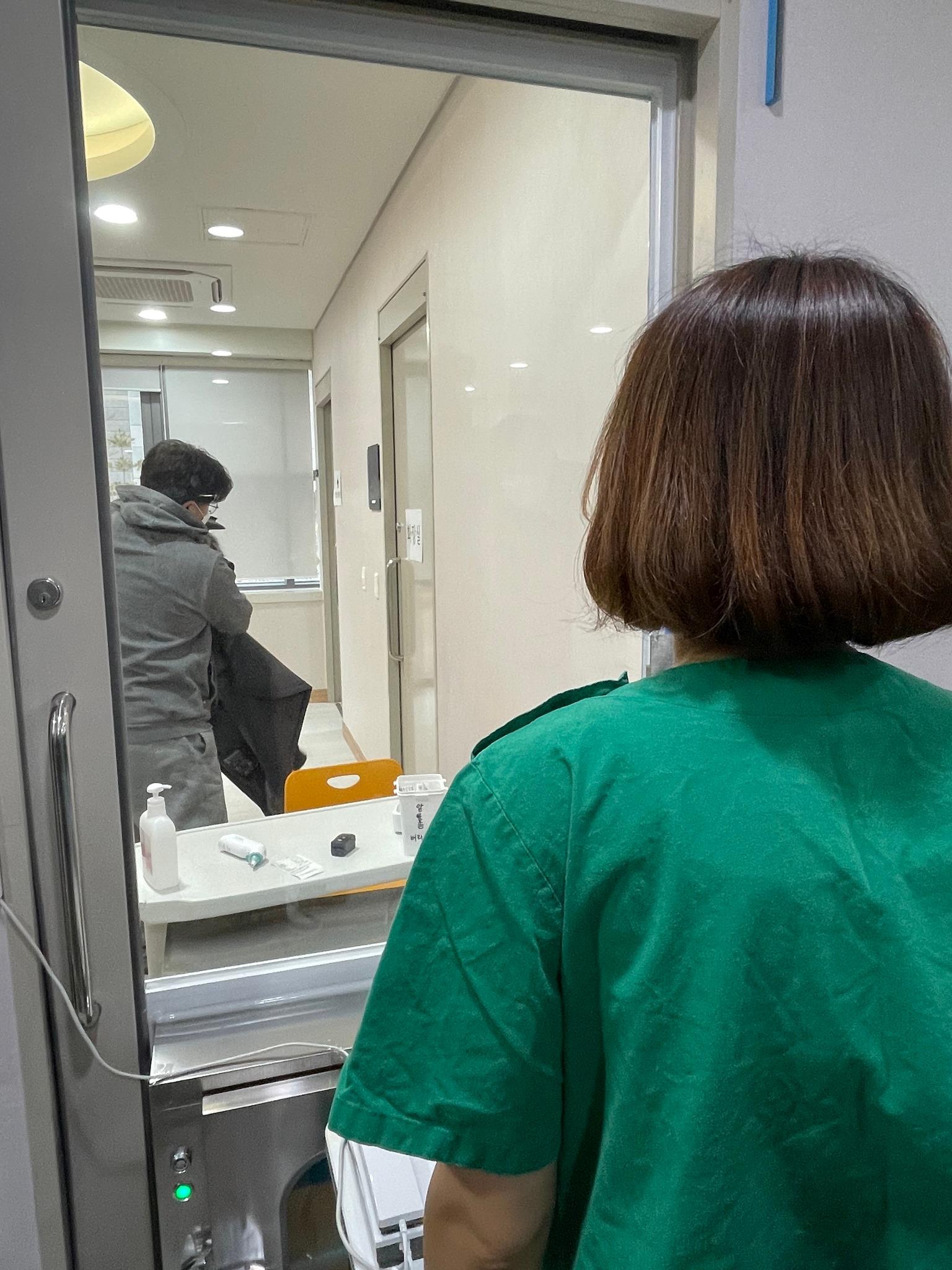(MENAFN- Asia Times)
ANSEONG – Early last Saturday evening, this writer received an ominous text message on his smartphone.
It said that a Covid-19 outbreak had been traced to a pub I had visited last Thursday evening, warned me to isolate immediately and get tested as soon as possible.
On Sunday, I drove to a downtown testing center – a series of tents set up in the plaza outside Seoul's City Hall. There, I joined a socially distanced queue, inputted a QR code into my smartphone and entered personal details into the linked site.
Those details were printed out by staff and attached to sample swabs. A (free) test was concluded. The process had taken around 20 minutes, nose-to-tail. I drove home and awaited results.
On Monday morning I received another text message: My test was negative. Life resumed.
I should add my alert was triggered by the QR code, supplied by Korea's leading free messenger app, Kakao, that members of the public are required to zap before entering food and beverage establishments.
Presumably, someone in the same pub last Thursday evening had tested positive on Friday or Saturday. Everyone else in my party had received the same text and had gone through a similar test experience.
The above process is a testament to the effectiveness of the system South Korean health authorities have emplaced nationwide. Utilized by a generally obedient public who have a high familiarity with personal digital gadgetry, it is an impressive feat of systems integration.
It extends well beyond QR codes, smartphones and public test centers. For example, immigration, public transport, CCTV, mobile payment and other databases have been centrally linked and connected to an AI system to enable efficacious contact tracing.
And after a slow start, South Korea now has one of the highest vaccination rates on earth. As of Thursday, 85.6% of South Koreans were fully vaccinated, with 50.7% having been boosted.
These Covid-management systems have earned South Korea widespread global kudos. They have also adroitly carried the nation through the pandemic with one of the lowest death rates in the developed world. All without a single lockdown, local or national, being mandated.
But now the system is shifting. Korea will transition from an in-patient to an out-patient system as of February 2. And it needs to because this week Korea has seen its daily Covid-19 infection numbers shoot through the roof as the Omicron variant surges.

Anseong Hospital is one of the pilot locations for a teleconsulting system for at-home treatment of Covid-19's Omicron variant. The system goes nationwide after the Lunar New Year holiday next month. Photo: Andrew Salmon / Asia Times Omicron tsunami breaks There were 14,518 new Covid cases recorded today (January 27) – a daily record. South Korea had only posted its first five-digit daily infection tally – 13,012 – on Wednesday. The daily record prior to that had been 8,570 on Tuesday.
Clearly, an accelerating spike is building. Last week, daily new infection numbers were below 4,000. Still, early indications are that the Omicron is proving to be far less severe than previous waves – a trend previously observed in countries such as South Africa and the UK.
The number of severely ill patients in South Korea on Thursday was 350 – down 35 from Wednesday, even though Thursday's infection caseload was higher. Amid these trends, Seoul has decided to swallow the risk and not deploy its customary go-to response to infection surges of tightening up social distancing measures.
“Distancing is a measure that incurs high socioeconomic costs,” Sohn Young-rae, a senior health official, said, according to Yonhap news agency .
Currently, among other measures, there is a 9:00 pm curfew on food, beverage and entertainment outlets, while meeting numbers are capped at six people.
“We still need to look at the situation further, but we're not at a point where the rapid increase in infection cases is affecting the ratio of serious cases or the operation of the medical system,” Sohn said.
This prudent approach has backing at the highest level.
“As Omicron spreads, we must have the highest level of alertness,” President Moon Jae-in said on Wednesday.“But we should also be wary of excessive anxiety and fear.”
The country is not unprepared. The Ministry of Health and Welfare this week bussed groups of reporters out of Seoul to an out-of-town hospital that is piloting how Korea can deal with the highly transmissible Omicron variant.
What they saw was a surprisingly – and reassuringly – old tech solution.

A doctor engaged in tele-consulting at Anseong Hospital. Photo: Andrew Salmon/Asia Times Tele-treatment on tap Anseong Hospital, a public hospital in a dormitory town that is approximately a 90-minute drive from central Seoul, is the site of a dedicated center that drastically minimizes inpatients.
“This center is contactless so patients can talk to doctors virtually, and we can monitor patients,” hospital director Lim Seung-kwan told reporters.
South Korea is a nation where K-pop avatars – i.e. virtual singers – are a real thing. It is where next-generation technologies such as 5G get their first rollout. In its streets, every self-respecting Kim, Park or Lee possesses the latest personal digital device.
Yet rather than a web-based AI medical system, say, a virtual doctor or a hologram nurse, the key technology in use at the center and key to its operation was invented in the 19th century: the old-fashioned telephone.
“A lot of people are anxious, they worry,” Lim said.“As we move to home treatment, a lot of people think the government is doing less.”
To counter this, tele-contact provides patients“with emotional and psychological stability,” officials said.
The center, which has taken over the hospital's former kindergarten, has 25 nurses and six doctors who work shifts. Journalists saw nurses sitting at computer consoles with telephones ready, and a doctor carrying out a teleconsultation.
“Are you coughing? Does the coughing hurt? No? Good, then you are not serious,” the doctor said.“Take some Tylenol and let's see how your condition progresses. Your blood test results come out this afternoon…I'll contact you again this afternoon.”

Citizens line up for free tests at a Covid-19 test facility outside Seoul's City Hall, January 23, 2022. Photo: Andrew Salmon / Asia Times
The aim of the center is clear and simple: To ensure that physical resources are not overwhelmed by the surging caseloads of patients with minimal or no symptoms.
“This has become much more important as we are running out of hospital resources,” said Kim Seung-il, the planning team head for Anseong's at-home treatment center.
The process begins when a patient tests positive. He or she is then triaged, via questionnaire, at the local health centers that stand in every Korean neighborhood.
“If there is a lower clinical risk and no underlying conditions, that person is eligible for at-home treatment,” Kim said.
The public health center determines whether household members need to also undergo isolation, designates an off-site health provider – such as Anseong Hospital – and delivers at-home treatment guides.
There is also a physical component. Self-treatment kits, including an oximeter (to test blood-oxygen levels painlessly), a thermometer and fever reducers, are sent to the patients' home. Oral medications for those who require them and daily necessities such as foodstuffs are also supplied.
Monitoring takes place via phone. Consultations are twice per day for normal patients, and three times per day for those over 60, or otherwise at-risk.
However, there is also a human-to-human component to the system. If patients are suffering any unusual symptoms, they can make a telephone appointment to come to the center.
But this process, too, is contactless. Journalists saw patients self-testing in a sealed-off room: Chest x-rays, blood pressure tests and blood tests. Nurses consulted them via glass windows, making for a face-to-face consulting environment.
Injections and medications can also be physically delivered in this in-patient center.
Throughout the at-home treatment process, a location-based smartphone app ensures that patients remain in isolation. The hospital notifies the patients when they are free to end their home isolations.
Of course, if a patient's condition deteriorates, the hospital arranges dedicated transport to bring them in for in-patient treatment.
The at-home treatment system, currently being tested in Anseong as well as other parts of the country, will expand nationwide after the three-day Lunar New Year holiday ends on February 2.

A nurse prepares to consult a patient visiting Anseong Hospital's contactless Covid-19 treatment center. Photo: Andrew Salmon / Asia Times Early days Still, there are questions. Anseong Hospital services a catchment area of around 200,000 citizens. If Omicron cases continue to climb, will the 31 dedicated staff at the center be enough?
Lim is flexible.“This is an initial strategy,” he said. The number or teleconsultations could be slashed to one, per patient, per day, if infections climb radically,” he said.
Though the system at Anseong is a pilot, it is not in isolation. And early home treatments for Covid – a disease with a low mortality rate – in South Korea, of less than 1% of cases – nationwide have been encouraging.
Of the 211,038 Covid-19 patients in South Korea who had undergone at-home treatment through January 23, 94.9% have returned to everyday life
The question now that Omicron is on a rampage is how effectively and swiftly can the system piloted at Anseong be scaled up.
“Anseong Hospital has taken the lead in at-home treatment systems,” said Anseong Mayor Kim Bo-ra.“We believe this model can apply nationwide.”
MENAFN27012022000159011032ID1103601825